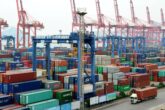August 13, 2020
Designing for Export: Industry and Government Roles
In the past, much U.S. defense acquisition was geared toward development of systems that met America’s own needs, with little regard for partner requirements. This approach increasingly lacks military sense or economic utility. The United States should enhance the exportability of U.S.-produced platforms and systems to U.S. allies, which will deepen military ties with allies, increase interoperability, and strengthen the U.S. defense industrial base.
While it ultimately is up to the private sector to meet the market’s demand signal, there are several things can be done within the U.S. defense acquisition process to support such efforts.
The United States should enhance the exportability of U.S.-produced platforms and systems to U.S. allies.
First, Department of Defense (DoD) program managers already are required under most circumstances to consider incorporating exportability into a system or subsystem likely to be exported to U.S. allies. This requirement, which significantly cuts redesign and re-engineering costs and time on the back end, could be expanded further and should be supported with dedicated funding to encourage the development of exportable versions of defense systems early in their life cycles.
Second, the United States needs to promote a role for its partnership with industry that goes beyond the DoD supply chain. This raises the thorny question of why firms are not already more focused on designing systems for export. Why does industry believe it is easier to secure U.S. government approval for export of high-end systems than design and market lower-end systems? There is a need not only to incorporate the requirements for exportability early in the U.S. defense solicitation process but to consider what measure of support is provided for the “losers” in a solicitation, i.e., where a company may seek to export a system even—or especially—if the DoD does not buy it.
The best approach is to go back to basics: While the obstacles to exportability are based on technology sensitivity, the prospective foreign partner, and other factors, the overriding concern remains protecting the U.S. technological edge and avoiding potential danger to U.S. forces. To embark on an enhanced effort at exportability, there needs to be an evolution in the approach toward technology protection, one that invokes the positive qualities of an open architecture rather than attempting to safeguard technology through purely exclusive means. These elements need to be considered at the outset of the acquisition process, rather than long after the requirements for U.S. systems already are set.
The best approach is to go back to basics.
The impetus of alliance warfare, the importance of interoperability, and the health of the defense industrial base all argue for a refreshed approach to defense exportability. By thinking about how to share American systems with partners at the front end of the process, the U.S. government can save time and effort later, making ourselves a far more responsive and attractive security partner. Now is a good moment to rethink our overall approach and encourage relevant DoD actors and industry to support an open architecture–based framework for exportable systems.
About the Author
Tina Kaidanow is the former Acting Assistant Secretary of State for Political-Military Affairs.
Learn More
CNAS has asked a group of experts and policymakers to offer their perspectives on the policy goals that U.S. export controls should serve, and how and under what circumstances U.S. export controls can effectively achieve those policy goals.

Export Controls Are a Defining Instrument of U.S. National Security
A group of experts and policymakers offers their perspectives on the policy goals that U.S. export controls should serve....
Read MoreMore from CNAS
-
Game Over?
The trade wargame suggests that sustained high tariffs could create leverage and urgency to spur action toward a productive restructuring of the international trade system....
By Emily Kilcrease & Geoffrey Gertz
-
Middle East Security / Energy, Economics & Security
Trump Inks $600 Bn Deal In Saudi Arabia | Musk, Blackrock CEO Flank Trump In Gulf VisitIn today's episode of India Global, U.S. President Donald Trump secured a $600 billion commitment from Saudi Arabia on Tuesday to invest in the United States. NDTV's Gaurie Dw...
By Daniel Silverberg
-
Energy, Economics & Security / Technology & National Security
Tariffs and Tech: An Uncertain RecipeHigher tariffs could prompt American cloud companies to shift more of their capital investments abroad....
By Pablo Chavez
-
Trump Tariffs: How Will U.S. Plans Reshape the Global Economy?
Donald Trump says he's already decided the tariffs he will impose on countries that export goods to America, including the United Kingdom. Channel 4 hears from Emily Kilcrease...
By Emily Kilcrease




